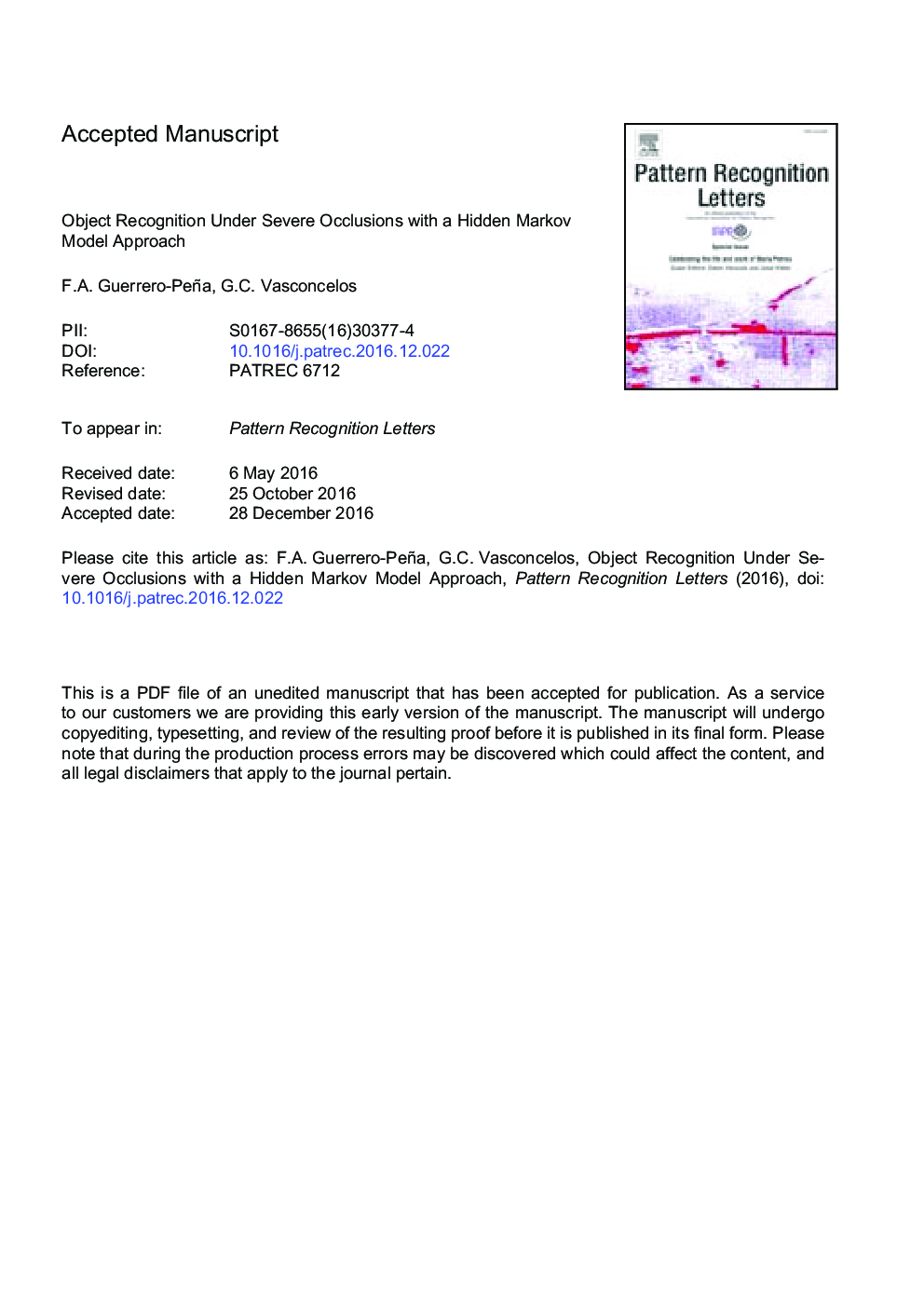| Article ID | Journal | Published Year | Pages | File Type |
|---|---|---|---|---|
| 4970195 | Pattern Recognition Letters | 2017 | 10 Pages |
Abstract
Shape classification has multiple applications. In real scenes, shapes may contain severe occlusions, hardening the identification of objects. In this paper, a method for object recognition under severe occlusion is proposed. Occlusion is dealt with separating shapes into parts through high curvature points, then tangent angle signature is found for each part and continuous wavelet transform is calculated for each signature. Next, the best matching object is calculated for each part using Pearson's correlation coefficient as similarity measure between wavelets of the part and of the most probable objects in the database. For each probable class, a hidden Markov model is created in an ensemble through training with the one-class approach. For hypotheses validation, two area restrictions are set to enhance recognition performance. Experiments were conducted with 1500 test shape instances with different scenarios of object occlusion. Results showed the method not only was capable of identifying highly occluded shapes (60%-80% overlapping) but also present several advantages over previous methods.
Related Topics
Physical Sciences and Engineering
Computer Science
Computer Vision and Pattern Recognition
Authors
F.A. Guerrero-Peña, G.C. Vasconcelos,
